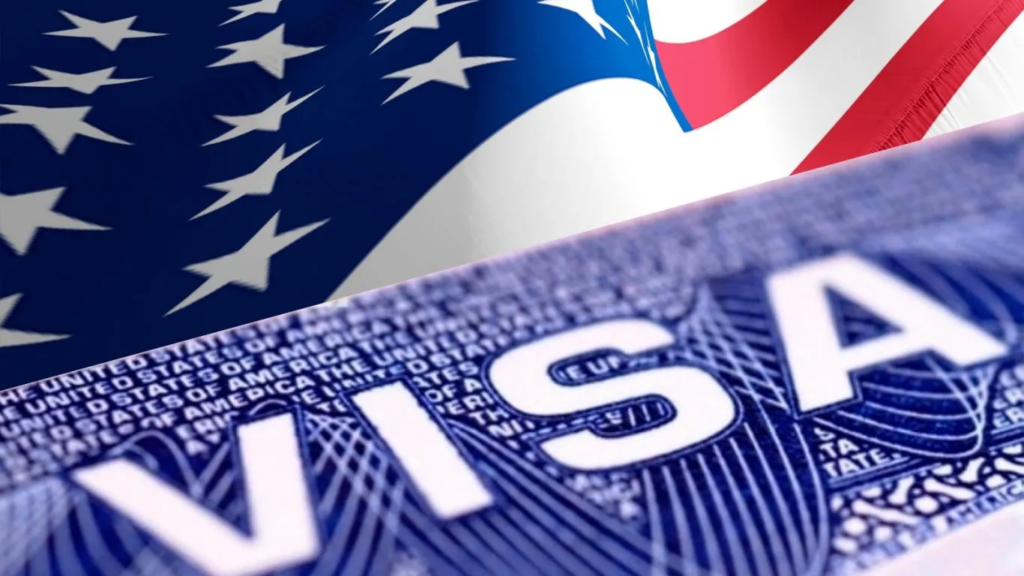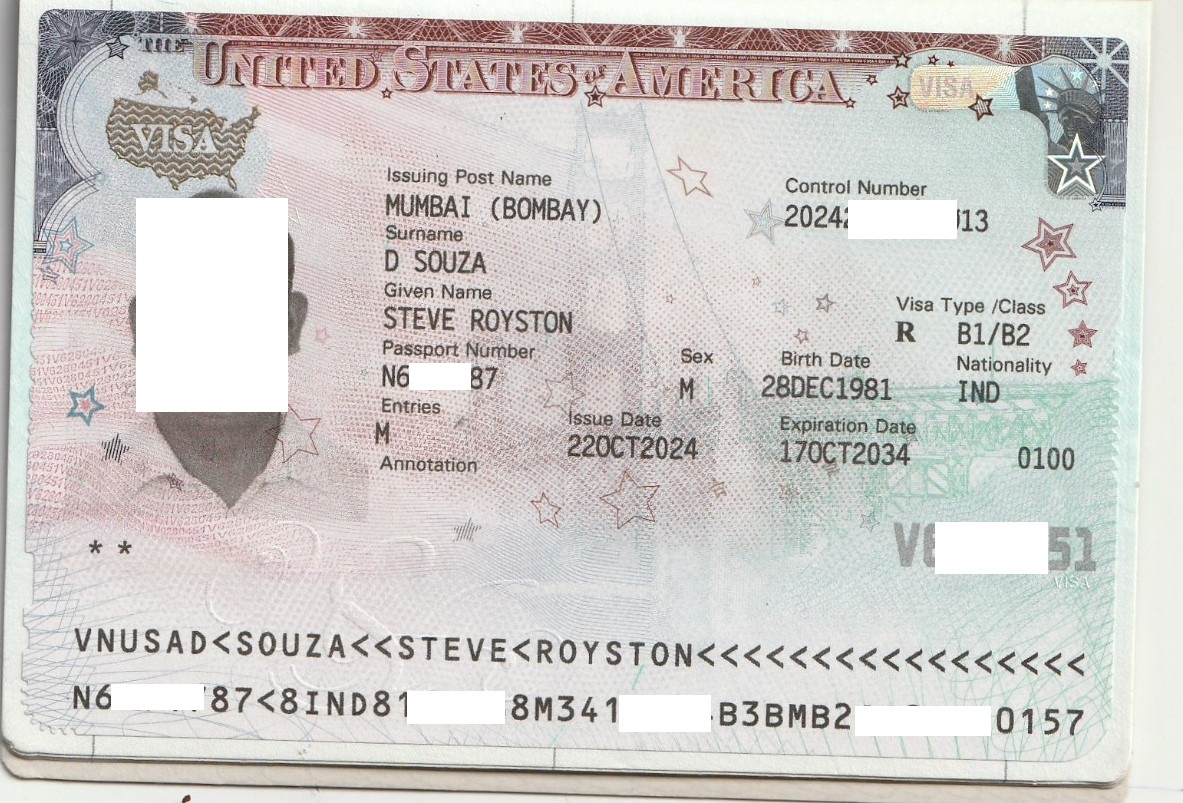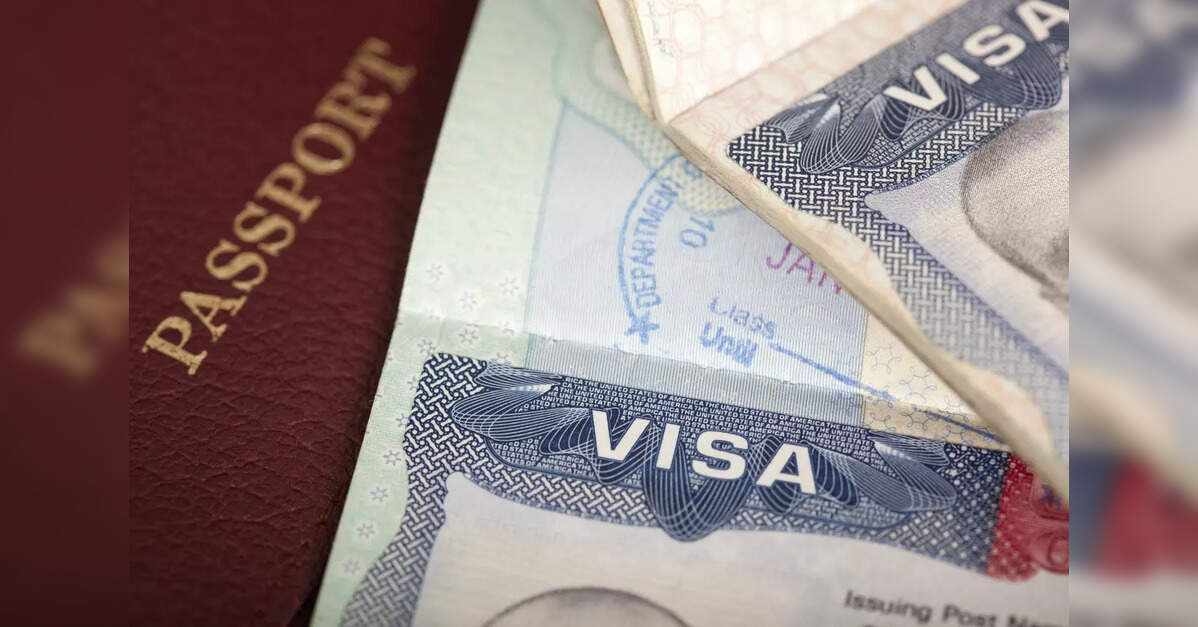Unlocking Opportunities: Crucial Info on US Visas for Indian Citizens
Maneuvering the intricacies of U.S. visa options is essential for Indian residents intending to discover opportunities in the United States. With different groups ranging from short-lived visitor visas to pathways for long-term residency, recognizing the nuances of each can markedly affect one's trip. This conversation will certainly highlight important info, consisting of application treatments and qualification standards, that can empower people in their pursuit of brand-new experiences. As we unload these necessary elements, the inquiry develops: what approaches can one employ to boost their chances of an effective application?
Introduction of US Visa Types
When going across the facility landscape of US immigration, comprehending the different sorts of visas offered is necessary for Indian residents seeking access right into the USA (Types Of US Visas). The US immigration system is mainly categorized into 2 broad classifications: immigrant visas and non-immigrant visas
Immigrant visas are designated for those meaning to live completely in the United States. These consist of family-sponsored and employment-based visas, where applicants usually need a sponsor. Non-immigrant visas, on the various other hand, accommodate people seeking momentary home, such as travelers, service visitors, and those traveling for details functions like job or research study.
Within the non-immigrant category, numerous visa kinds exist, including B-1/ B-2 for business and tourist, H-1B for specialized professions, L-1 for intra-company transferees, and O-1 for people with remarkable abilities. Each visa has distinctive eligibility requirements and application procedures, demanding thorough research study to identify the suitable classification.
Recognizing these categories is crucial for Indian citizens, as it enables them to navigate the application process more effectively, guaranteeing they select the proper visa kind to satisfy their particular demands and objectives. US Visas For Indian Citizens.
Pupil Visa Options
For Indian residents desiring research in the United States, pupil visas provide an important path to pursue scholastic opportunities. The key visa categories for pupils are the F-1 and M-1 visas.
The F-1 visa is designated for scholastic students enlisted in a full-time program at an approved organization, such as colleges and colleges. This visa permits students to take part in on-campus employment and, under certain problems, take part in optional useful training (OPT) after finishing their level, giving useful work experience in their field.
Alternatively, the M-1 visa is intended for vocational or non-academic programs. It accommodates pupils going after technical or trade training, allowing them to enroll in non-degree programs. M-1 visa holders might join useful training, however it is typically a lot more restricted compared to the F-1 classification.
To acquire a student visa, applicants have to protect admission to an U.S. establishment, obtain a Form I-20, and show economic ability to sustain their education and learning and living expenditures. Understanding these visa options is considerable for Indian residents preparing to start their instructional trip in the USA.
Job Visa Categories
Several Indian citizens looking for employment possibility in the United States might consider various copyright categories tailored to various specialist demands and qualifications. The most prominent job visa is the H-1B visa, designed for competent employees in specialized line of work calling for a greater education and learning level or its comparable. It enables U.S. employers to momentarily use international workers, with a cap on the number of visas issued annually.
An additional vital group is the L-1 visa, which promotes the transfer of staff members within international business. The L-1A visa is for managers and executives, while the L-1B visa is for staff members with specialized knowledge.
The O-1 visa deals with individuals with extraordinary abilities in their area, consisting of scientific research, arts, or organization. For farming or seasonal job, the H-2A and H-2B visas are readily available, allowing companies to employ international employees for momentary placements.
Family-Based Migration
Family-based migration provides a path for united state residents and authorized long-term residents to rejoin with their family members from India. This immigration classification is fundamental for keeping familial bonds and helping with the assimilation of member of the family right into American culture. U.S. people can request for immediate family members, including spouses, youngsters, and parents, without encountering annual restrictions on visas. This expedited process considerably minimizes waiting times for these close family connections.
On the other hand, legal irreversible locals might sponsor partners and single children, yet they are subject to annual caps, causing longer wait times. The family-sponsored migration system is separated into 2 primary groups: instant loved ones and family members preference categories. The previous includes those who have a straight relationship with an U.S. person, while the latter encompasses even more distant family members, such as brother or sisters and wedded children of citizens, and kids of authorized permanent citizens.
For Indian residents looking for family-based migration, understanding the nuances of this system is vital. Correct documentation and adherence to application procedures are crucial for successful sponsorship. By navigating via these complexities, family members can work in the direction of reuniting and building their lives with each other in the USA.
Permanent Residency Process
The process of getting permanent residency in the United States involves several essential visa classifications tailored for Indian residents. Comprehending the application actions, consisting of needed documentation and eligibility criteria, is vital for an effective end result. In addition, prospective applicants should know the anticipated timeline and certain needs related to each classification.
Visa Categories Overview
While passing through the intricacies of the U.S. immigration system, Indian people looking for irreversible residency has to acquaint themselves with numerous visa groups tailored to different situations. The main pathway for irreversible residency is via employment-based visas, which are classified right into numerous preferences, consisting of EB-1 for people with extraordinary capacities, EB-2 for specialists holding postgraduate degrees, and EB-3 for knowledgeable employees. Each classification has specific eligibility requirements and handling times.

Variety visas, although limited in number, offer an opportunity for people from underrepresented nations to apply for permanent residency via a lotto game system. In addition, altruistic choices such as asylum and refugee standing deal paths for those dealing with persecution.
Comprehending these visa classifications is important for Indian people, as they considerably influence the approach for acquiring irreversible residency in the United States. Each group's subtleties and requirements require careful factor to consider to straighten with private situations and objectives.
Application Process Actions
Guiding the application process for get more info permanent residency in the USA involves numerous crucial steps that need to be carefully followed to assure a successful end result. The journey generally starts with figuring out the proper immigration group, such as employment-based or family-sponsored visas. Applicants have to gather necessary documentation, consisting of proof of qualification, economic statements, and individual identification.
As soon as the category is recognized, the next action is to file the Type I-130 (Application for Alien Relative) or Type I-140 (Immigrant Petition for Alien Worker), depending upon the basis of the application. Adhering to the authorization of the petition, applicants will certainly need to complete the National Visa Facility (NVC) processing by sending the needed fees and forms.
Next off, the candidate has to go through a medical exam and obtain cops clearance certificates. As soon as these are completed, an interview will certainly be set up at the U.S. consulate or consular office. It is crucial to prepare extensively for this meeting, as it can significantly influence the decision on the application. Upon approval, the candidate will certainly get their visa, giving them long-term residency in the United States.
Timeline and Demands
Charting the timeline and demands for obtaining permanent residency in the USA is important for Indian citizens looking for to develop a lasting existence. The process mainly hinges on employment-based or family-sponsored pathways, each with details requirements and timelines.
For employment-based migration, the process usually begins with a labor certification, which can take a number of months. When approved, the company files a Form I-140, Immigrant Application for Alien Employee, which can take an additional 6 months to a year, depending on the handling. Complying with I-140 approval, candidates may need to wait for their concern date to come to be current, which can vary substantially based on the candidate's classification and country of origin.
For family-sponsored migration, U.S. people can request for immediate loved ones, which generally results in faster processing. Various other family members categories may entail longer wait times due to annual caps.
Application Treatments
Understanding the application treatments for United States visas is necessary for Indian citizens looking for access into the United States. US Visas For Indian Citizens. This area will provide an overview of numerous visa categories and lay out the detailed process for using. By complying with these standards, candidates can navigate the complexities of the visa properly
Visa Categories Summary
Maneuvering the different visa categories readily available to Indian residents can be a complex process, yet it is important for those looking for to travel, function, or research study in the United States. The united state visa system is categorized mainly into non-immigrant and immigrant visas, each serving distinct objectives.
Non-immigrant visas, such as B-1/ B-2 for organization and tourist, F-1 for scholastic research, and H-1B for specialized employment, permit short-term keeps. Applicants need to demonstrate their intent to go back to India after their visit.
On the other hand, immigrant visas, consisting of family-sponsored and employment-based classifications, provide a path to irreversible residency. These visas commonly need sponsorship from a loved one or company in the U.S., together with a strenuous application procedure.

Step-by-Step Refine
Generally, the application process for united state visas entails several vital actions that applicants must carefully follow to ensure a smooth experience. The primary step is to determine the suitable visa classification based on the function of travel, such as work, research study, or tourist. As soon as the category is recognized, candidates must complete the on-line DS-160 form, giving exact individual info and traveling details.
After sending the DS-160, candidates need to pay the visa fee, which differs by visa kind. Next, schedule an appointment for a visa interview at the nearest U.S. Consular office or Consular Office. Types Of US Visas. It is critical to prepare for the meeting by celebration called for papers, including a valid copyright, visa verification, cost settlement invoice, and any type of sustaining documents certain to the visa classification
On the day of the interview, show up promptly and outfit suitably. During the interview, be prepared to respond to inquiries regarding your travel intents, economic security, and ties to India. Lastly, if approved, the visa will certainly be stamped in the ticket, enabling traveling to the USA. Complying with these actions guarantees a well-organized and effective copyright process for Indian citizens.
Tips for an Effective Application

Make certain that all kinds are completed precisely and truthfully. Little errors or noninclusions can result in hold-ups or perhaps denials. It is suggested to collect all necessary sustaining documents, consisting of financial declarations, work letters, and proof of ties to India, which demonstrate your intent to return post-visit.
Plan for your visa meeting by practicing reactions to common inquiries connected to your traveling plans and history - US Visa Categories India. Self-confidence and clearness can considerably influence the policeman's perception. Lastly, consider looking for assistance from reputable migration experts if you feel overloaded
Frequently Asked Questions
What Are the Handling Times for United States Visa Applications?
Handling times for U.S. visa can differ substantially based upon the visa kind, application quantity, and the applicant's place - Types Of US Visas. Typically, applicants need to prepare for a processing duration varying from a few weeks to numerous months
Can I Change My Visa Status While in the US?
Yes, people can change their visa status while in the United States, provided they meet eligibility requirements and comply with appropriate procedures. It is critical to file the ideal application with U.S. Citizenship and Immigration Provider (USCIS)
Are There Age Boundary for United States Visa Candidates?
There are typically no details age limits for U.S. visa candidates; however, specific visa categories may have age-related eligibility requirements. It is necessary to assess the requirements for every visa type to ensure conformity.
What Are Usual Factors copyright Rejection?
Common factors copyright denial consist of insufficient economic sources, failure to demonstrate ties to the home nation, insufficient application forms, lack of correct documentation, previous immigration violations, and failing to fulfill eligibility standards for the details visa group.
How Can I Appeal a Visa Denial Choice?
To appeal a visa rejection, evaluate the consular police officer's reasons, gather supporting documents, and send a formal charm to the proper authority, ensuring to abide by specified timelines and step-by-step needs for the allure process.